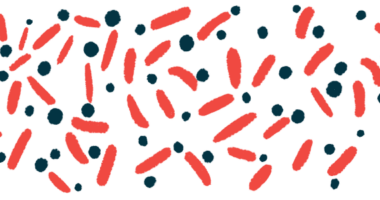PrimeC can significantly slow ALS progression, PARADIGM trial finds
Analysis of 62 'per protocol' patients finds 37.4% difference in ALSFRS-R scores

People with amyotrophic lateral sclerosis (ALS) given PrimeC in the PARADIGM Phase 2b trial — and who did not diverge in major ways from the trial’s rules — experienced a significant slowing in disease progression compared with a placebo, the treatment’s developer, NeuroSense Therapeutics, announced.
This finding comes from the trial’s per protocol population, an analysis covering 62 of the 68 patients randomly assigned to PrimeC or to a placebo, who adhered well to what is called a trial’s established protocol (its rules).
Recent top-line trial results, covering all 68 patients, showed a meaningful trend toward slower disease progression, with a lesser decline in the muscle strength needed for daily life activities, and a lesser decline in lung function and the known breathing difficulties with ALS. These treatment differences relative to a placebo, however, were not statistically significant.
PrimeC showing potential to render ‘significant and meaningful clinic benefit’
The new analysis in the trial’s per protocol population — focusing on the 62 patients who complied with its rules or protocol — showed a significant 37.4% reduction in functional decline, as assessed with the ALS Functional Rating Scale-Revised (ALSFRS-R).
“As we analyze the PARADIGM trial results, we continue to gain a better understanding of PrimeC’s potential to render a significant and meaningful clinical benefit to people living with ALS,” Alon Ben-Noon, NeuroSense’s CEO, said in a company press release.
“Today we are eager to share these new data with the ALS community, as we believe the PP [per protocol] analysis, demonstrating a statistically significant 37.4% difference in ALSFRS-R in patients treated with PrimeC vs. placebo, is an exceptional result,” Ben-Noon added.
PrimeC is an oral fixed-dose combination of ciprofloxacin, an antibiotic used to treat bacterial infections, and celecoxib, an anti-inflammatory agent. Both have well-established safety profiles and are approved in the U.S.
The combination is thought to slow ALS progression by easing inflammation and iron accumulation while improving RNA processing. These are key mechanisms known to be involved in ALS motor degeneration.
The PARADIGM trial (NCT05357950) is testing a long-acting formulation of PrimeC, given at a total daily dose of 1,496 mg, taken as two tablets twice daily. A total of 68 adult patients were randomly assigned to either PrimeC (45 people) or a placebo (23 people) for six months, while maintaining their standard ALS treatments.
The study, due to fully conclude in late 2024, set evaluations of the treatment’s safety and tolerability, and whether it can lower certain ALS biomarkers in the blood, as its primary goals. Secondary measures include changes in the patient’s ability to perform daily tasks — assessed with the ALSFRS-R — along with changes in lung function, quality of life, and survival.
Many of ALS trial’s patients continuing with PrimeC in study extensions
Top-line data shared earlier this month, covering all 68 trial participants, showed that six months of this PrimeC formulation was safe and well tolerated, with 96% of patients choosing to be treated in a one-year open-label extension. To date, all who completed these 1.5 trial years are continuing with PrimeC in an ongoing, investigator-initiated study, NeuroSense reported, without specifying the number of patients involved.
Six months of PrimeC’s use also reduced the rate of ALSFRS-R decline by 29%, and slowed the decline in lung function by 13%, compared with those receiving a placebo, top-line data showed. But these differences did not reach statistical significance.
For a better sense of the treatment’s effectiveness, a pre-specified analysis focused specifically on the per protocol group of 62 adherent patients, allowing for an assessment of treatment efficacy under optimal conditions. This is thought to provide a fair understanding of how a treatment works when used as intended.
Of these 62 patients, 43 had been randomized to treatment with PrimeC and 19 were given a placebo.
Now, six months of PrimeC use was seen to significantly slow the decline in ALSFRS-R scores by 37.4% compared with a placebo. A 17.2% reduction in lung function decline also was reported, but this difference again failed to reach statistical significance.
Results of treatment biomarker analyses are expected in the first half of 2024, NeuroSense stated. These include changes over six months in the ALS blood biomarkers TDP-43 and prostaglandin J2, as well as changes in nerve cell damage biomarkers called neurofilaments, an analysis being done in collaboration with Biogen.
“This data, in conjunction with hopefully correlative neurofilament readouts, will create a regulatory opportunity to advance PrimeC’s development in a breakthrough manner toward the market,” said Ben-Noon.
NeuroSense also announced plans for an end-of-Phase 2 meeting with the U.S. Food and Drug Administration, as well as a scientific advice meeting with the European Medicines Agency, both in the first half of 2024.
These meetings aim to discuss trial results and best approaches for PrimeC’s continued development, which is expected to include a pivotal and global Phase 3 trial of PrimeC that could launch next year.







